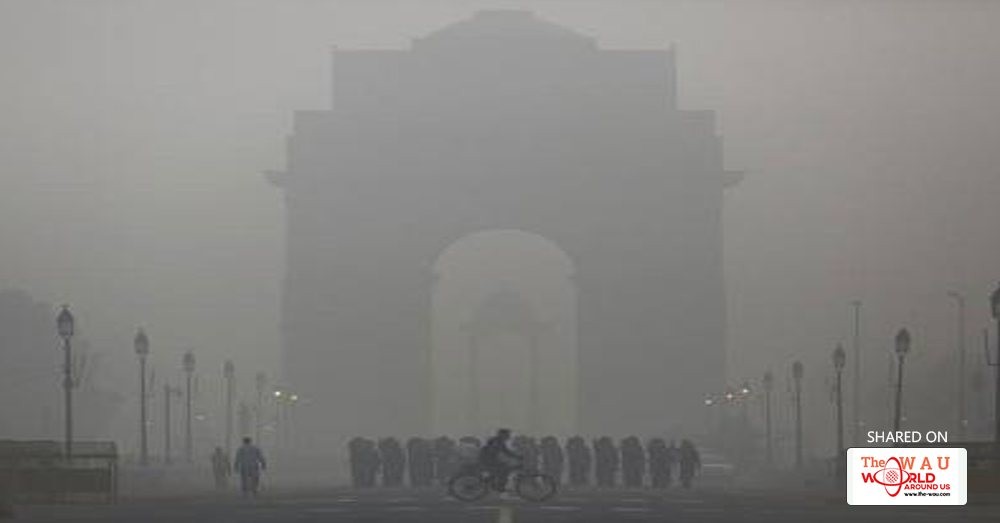Two years after it was started, India's National Air Quality Index (NAQI) does not provide a reliable picture of pollution in cities. The index uses colours ranging from dark green to dark red to show users at a glance how polluted the air in their area is at any time.
However, it is unreliable because most cities don't have enough monitoring stations, and the existing stations do not monitor for all important pollutants.
Not enough stations
The entire metropolis of Mumbai—home to more than 2.2 crore people—has only one air quality monitor in Bandra for NAQI. When former environment minister Prakash Javadekar launched NAQI under the Swachh Bharat campaign in April 2015, the goal was to cover 46 cities with a population of more than 10 lakh each, but only 29 are on the network so far. Of these, 20 cities, including some severely polluted ones like Varanasi, Patna and Kanpur, have only one NAQI monitoring station each.
The northeast has virtually no monitoring station. Large states like Chhattisgarh, Jharkhand and Odisha also don't have any. Asansol, Coimbatore, Bhiwadi, Ghaziabad, Noida, Ludhiana and Vapi are some of the critically-polluted areas that may be connected to NAQI this year.
Delhi is the only city with eight monitoring stations and it is likely to get 20 more this year. Compare that with Beijing that already has more than 35, and London, which has 100, according to a recent Greenpeace India report. Entire China has 1,500 government-run monitoring stations.
Central Pollution Control Board (CPCB), which runs the NAQI programme, had prescribed at least three stations each in Class 1 cities, nine each in mega cities like Bengaluru, and six each in all other cities that are either state capitals or major industrial areas.
Cost hurdle
Why has the NAQI network of monitoring stations grown so slowly? CPCB officials say the high cost of equipment and shortage of trained manpower is delaying its growth.
"We cannot just establish automatic stations. Each station that monitors eight criteria (common) pollutants costs about Rs 1 crore and its operational cost is Rs 10 lakh per year," said Dipankar Saha, head of Air Lab at CPCB. "They are all US EPA-approved automatic analysers. It takes about nine months to set up each station and we need dedicated manpower to monitor and validate the data recorded by these stations."
Saha said CPCB will not take data from low-cost private monitors. "Our monitoring methodology is prescribed in the gazetted notification. We do not trust low-cost monitors."
Experts say the cost hurdle can be overcome by using satellite data and air quality modelling.
Doubtful readings
CPCB may doubt data from private monitors, but its own equipment is often not calibrated properly. Former CPCB member secretary B Sengupta says, "We have noticed that many of the stations aren't even calibrated, which could give erroneous results."
Calibration is done by injecting gas into the monitor and tallying the results with specific readings. "We have noticed that scientists in most state pollution control boards are not capable of doing this calibration and it's entirely left to the suppliers of the equipment who also don't do it. Often, gas isn't available for testing."
That explains the huge difference in data collected manually and by automatic stations at the same location. "The difference is often as much as 30-50% when it shouldn't be more than 10%. Unfortunately, we are drawing some major conclusions on air quality based on very limited data," added Sengupta.
All pollutants not measure
CPCB stations do not measure the levels of all important pollutants. For instance, PM 2.5 (fine, respirable pollution particles) is measured in only seven cities, so World Health Organization (WHO) extrapolated PM 2.5 data from PM 10 (coarse particles) data for India's urban air quality database.
"We may not know the proportion of industrial pollution either. Toxic pollutants are not being monitored. Volatile organic compounds (VOCs), which are commonly emitted around industries in critically-polluted areas like Vapi, Ankleshwar, Vatva and others, are not being captured at all," said Sengupta.
Share This Post














